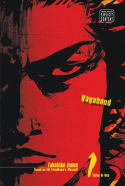It’s the fourth quarter, and your co-hosts have banded together to take you through the final stretch!
Anna joins me for a special Let’s Get Visual column dedicated to Inoue’s artwork, where we discuss pages from Real and Vagabond.
And speaking of Vagabond, we both weigh in on the series, with Anna tackling the two most recent VIZBIG editions to be released (nine and ten) and me checking out the first one. Ultimately, it looks like neither of us has found a new favorite over the course of the MMF, but we still both enjoyed branching out!
A big thank you once again to everyone who contributed and left comments. MJ of Manga Bookshelf will be hosting the next MMF, which will focus on works by CLAMP.


















Recent Comments